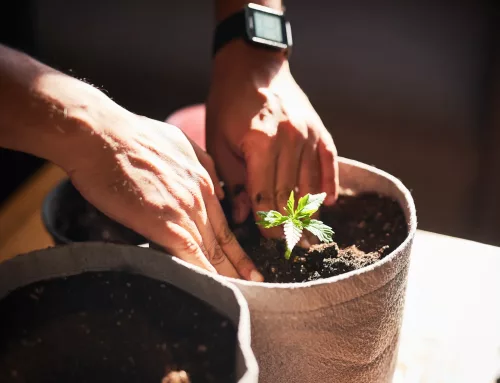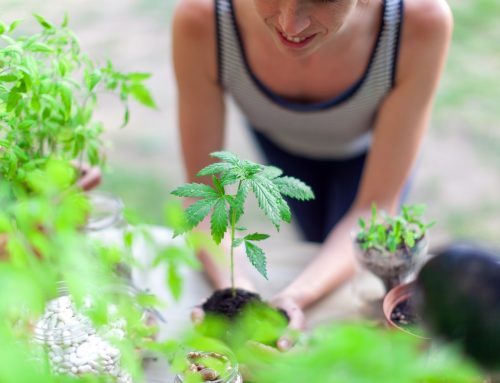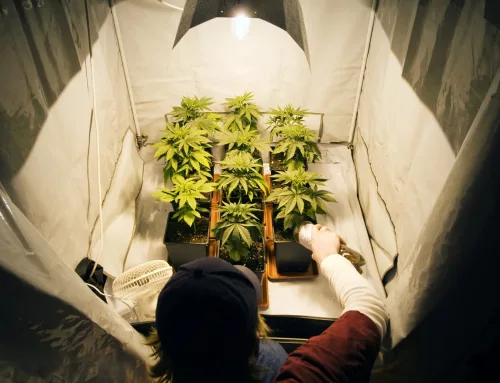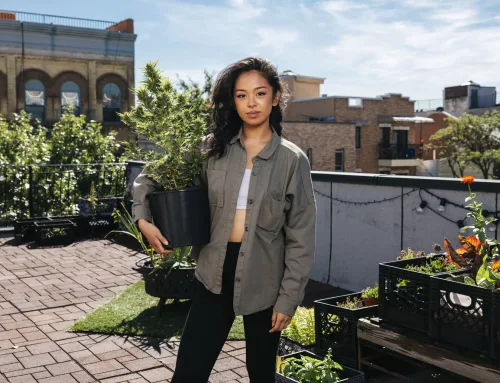One of the easiest ways to grow cannabis is from seed.
By growing from seed, you can avoid the risks of contamination. This includes potential pests and pathogens that could tag along from starter plants and clones (small rooted cuttings from older plants) purchased from dispensaries, nurseries, or fellow growers.
A seed is a fresh start for a brand-new plant. But, if you’re like many of us, growing anything from seed—cannabis or otherwise—can seem like a daunting task.
Trust us: It’s easier than you might think. We often hear growers laugh and joke about how they couldn’t keep houseplants alive until they started growing cannabis. With the right knowledge and a bit of patience, anyone can grow their own from seed.
As the legality of cannabis continues to change, you may decide to exercise your right to grow. When you do, this article will teach you how to grow a cannabis plant from seed in a step-by-step overview, covering everything from selecting seeds to enjoying your harvest.
Whether you’re intrigued by the cultivation process or seeking a new hobby, let’s explore the essentials of growing cannabis from seed.
Growing Cannabis Plants from Seed: An Overview
Growing cannabis plants from seeds requires a bit of planning and decision-making before you get to enjoy the fruits of your labor. First, you’ll need to pick what you’ll grow, where you’ll grow, and how you’ll grow.
This can be broken down into six simple steps:
- Choose Seeds
- Pick Indoor or Outdoor
- Select Growing Style
- Schedule: Growth Stages
- Harvest
- Enjoy
Step #1: Choosing Your Cannabis Seeds
The journey begins by selecting your cannabis seeds.
When choosing seeds, consider factors such as the strain’s growth characteristics, resistance to pests, as well as the reputation of the breeder and how transparent they are with their cannabis breeding and cultivation practices.
Autoflowering seeds are ideal for beginners due to their simple light requirements and shorter growth cycles. Photoperiod seeds, on the other hand, offer more control over the plant’s growth and flowering stages as well as a greater variety to choose from.
If it’s your first time growing, feminized autoflower seeds are an excellent option due to ease of growth, lack of sexing, and speedy timelines from seed to smoke.
Step #2: Picking Your Growing Environment: Indoors vs. Outdoors
Once you have your seeds, you have to decide whether you’ll grow your cannabis indoors or outdoors.
Indoor growing allows for complete control over the environment, including temperature, light, and humidity. This control can lead to higher quality buds but often at a higher cost.
Growing cannabis outdoors, on the other hand, utilizes natural sunlight and is generally less expensive, though it leaves plants more susceptible to pests and weather conditions. If you’re prepared to work with Mother Nature, there’s something special about sun-grown cannabis.
Step #3: Selecting a Growing Style
There are countless ways to grow cannabis, and your growing style will develop over time.
When you start, the two big choices you’ll have to make are:
- Growing Medium: What will your plants grow in? For most growers, the answer is either soil, coco, rockwool, or hydro, each with its own set of advantages.
Soil is great for beginners due to its forgiveness and minimal need for additional nutrients. Coco coir, a medium derived from coconut husks, offers faster growth and more aeration. Hydroponics, while more complex, can result in higher yields and faster growth but requires more knowledge and attention. - Nutrients: Where will your plants get their food? For most growers, this is a choice between bottled nutrients that are fed with each watering, or soil amendments that are blended into the growing medium periodically.
In grower slang, this is often a debate of “Salts vs Organics,” respectively, though both terms can be misused. “Salts” refers to mineral nutrients, often sold in bottled or powdered form. Organics typically refers to amended soil setups.
Your growing style plays a significant role in the development of your cannabis plants.
Step #4: Following a Cannabis Grow Schedule
Growing cannabis is as simple as following a schedule from seed to harvest, and many grow brands and stores will offer these with their products.
Most nutrient companies will provide a schedule with feeding recommendations for each week of your growing season to make it easier for growers. You can also find tested grower recommendations on the internet and in various grow books.
Even if you are going all-natural, with nothing but soil amendments and the sun, you’ll still want to know how long your season will be and how long it takes to grow cannabis from seed, so that you can plan to care for your plant the entire time.
At the very least, have a plan for how often you’ll be watering and checking in on your plants. Regular attention and watering are key to a successful grow.
How long does it take to grow cannabis from seed?
If you’re starting with feminized autoflowers, roughly 10 weeks (70 days) minimum. If you’re growing with photoperiod seeds, you’ll typically need at least 14 weeks (98 days) depending on the variety.
As your plant grows from seed to harvest, it will go through 2 distinct phases: vegetative (often referred to simply as “veg”) and flowering (or “bloom”).
Cannabis Vegetative Stage
The vegetative stage is where your cannabis plants will do most of their growing, which typically lasts for 6+ weeks. This phase is crucial for developing a strong structure that can support your buds later on as well as allowing seedlings time to mature to a point where they produce the hormones required to flower.
During this time, techniques such as low and high-stress training can be employed to maximize the use of space and improve air circulation around the plant.
Cannabis Flowering Stage
This is when your plants will start producing the buds.
Following the vegetative stage, cannabis plants enter the flowering phase, which lasts for about 8-10+ weeks (for photoperiods, less for autos).
If you are growing photoperiod seeds indoors, the transition to flower is often referred to as the “flip,” because it requires flipping your light schedule to a flower schedule—usually 12 hours on, 12 hours off—to signal to the plant that it is time to bloom.
For outdoor and autoflower growers, this transition happens more gradually, relying on nature’s cues to encourage the plant to start flowering.
Step #5: Harvesting Your Cannabis
The finish line: harvesting is when the buds from your cannabis plants are removed for drying.
How to Know When Your Cannabis Is Ready for Harvest:
- Weather: If you are an outdoor grower, seasonal changes, including cold, wet conditions, can force your hand and determine when you will harvest, even if the plants may not be fully matured and ripe.
- Breeder Guidance: Many genetics will come with a recommended harvest window, often 8-9 weeks. Keeping tabs on your schedule will allow you to have an idea of when the plant may be ready to chop.
- Pistils: The “hairs” that you see on your buds are called pistils, and they will change from a light yellow to an orange-ish red as your plant ripens. These pistils will also recede into the buds in many cases towards the end of a plant’s life.
- Trichomes: The small, sticky resin glands on your plant that look like small spheres will change color throughout the flowering phase, starting clear and progressing to cloudy, before eventually turning amber. Many growers will shoot to harvest once a small percentage of amber (5-10%) is visible, often viewed through a zoomed-in photo or microscope.
Once you’ve determined it’s time to chop, harvesting is a three-part process: chopping, drying, and curing.
Properly drying and curing your cannabis is crucial for achieving the best flavor and potency. This process can take several weeks but is well worth the wait. Most commonly, cannabis buds are hung to dry in brand clusters or as whole plants for 1-3 weeks before being trimmed and jarred up for curing and storage.
Step #6: Enjoying Your Harvest
Once cured, your cannabis is ready to be enjoyed.
Whether you prefer smoking, cooking with it, or creating extracts, the satisfaction of consuming cannabis you’ve grown yourself is unparalleled.
Growing cannabis from seed is a rewarding process that allows for a deep connection with your plants. You have the chance to care for a unique seedling, from start to finish, as well as enjoy the benefits of its harvest.
By following these steps and remaining patient and attentive, even novice growers can achieve an enjoyable, bountiful harvest.
START YOUR NEXT GROW FROM SEED
WITH HAPPY VALLEY GENETICS
Explore Feminized Autoflower and Photoperiod Seeds today!




